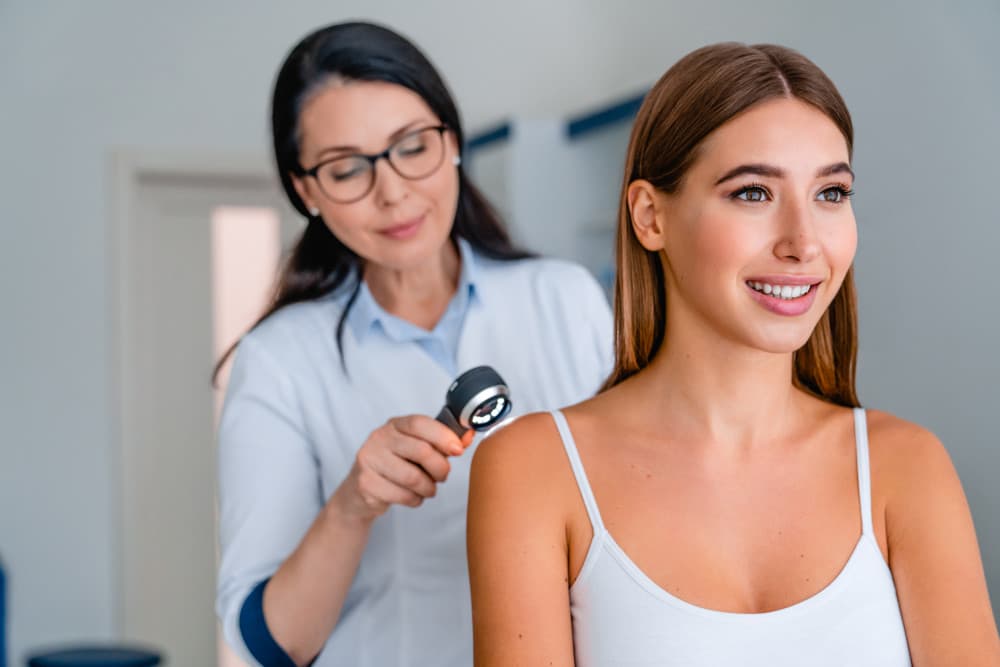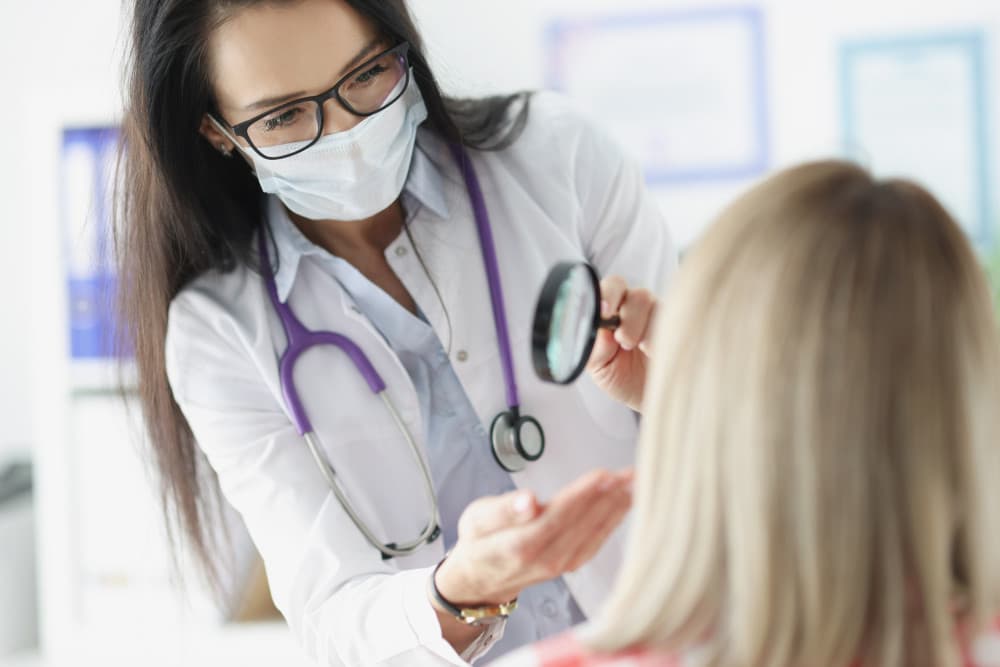Beat the heat: Summer skincare tips for healthier skin

7 Minutes

Team Curative

Jun 3, 2025
Did you know that skin is the human body's largest and most visible organ? It makes sense that people have gone to great lengths to maintain beautiful, healthy skin for centuries.
In recent years, awareness of skincare and skin health has surged in popularity. The human body’s largest organ is the subject of constant new discussion, trends, and research. The skincare industry is worth an estimated $122.11 billion globally as of 2025 and is projected to grow up to $194 billion by 2032.
One product that continues to see staggering growth within the larger skincare market is sunscreen. In 2025, the global market for sun protection products generated $12.20 billion. That number is projected to grow by 4% each year until 2030. By the end of the decade, the sector is expected to reach upwards of $14 billion.
Why the uptick in the skincare and sun care product markets? Dr. Abigail Waldman, assistant professor of dermatology at Harvard Medical School, said, “I think there is a more pervasive media representation of [the benefits of] wearing sunscreen, like preventing aging and skin cancer,” Waldman said in a phone interview. “It’s a message that’s out there.”
In addition to using skincare products like sunscreen, you can engage in preventive care practices to achieve healthy, glowing skin. As summer approaches, take note of these preventive care tips to avoid skin issues.

What is UV exposure, and how does it increase in the summer months?
Ultraviolet (UV) radiation is a form of energy produced by the sun. You can’t see UV radiation because its wavelengths are shorter than visible light. The UV energy the sun produces reaches the Earth and stimulates our skin to produce essential vitamin D.. You can also find UV radiation in human-made sources like tanning beds. Excessive exposure to ultraviolet radiation significantly increases the risk of developing skin cancer.
Of the three types of UV rays — ultraviolet A (UVA), ultraviolet B (UVB), and ultraviolet C (UVC), UVA is the most abundant source of solar radiation at the Earth’s surface. UVA penetrates beneath the top layer of human skin. Dermatologists believe that UVA causes damage to connective tissue and increases the risk of skin cancer. UVA also causes skin to wrinkle, tan, and burn. UVB rays penetrate less deeply into the skin, but can still cause some forms of skin cancer. The Earth’s atmosphere absorbs UVC rays, rendering them harmless.
The summer months bring sunny weather and outdoor fun, but also come with the risk of excessive UV exposure. Sunlight intensity is highest during the summer, especially between 10:00 a.m. and 4:00 p.m. Traveling or doing anything outside during these times increases your chances of getting sunburned. Scorching temperatures, harmful UV rays, and increased humidity can lead to various skin issues if you don't take proper precautions and preventive health measures.
What are the health implications of UV exposure?
Exposure to the sun causes permanent changes to your skin. Too much exposure to the sun can speed the effects of aging and increase the risk of:
Skin cancer
Wrinkles
Freckles
Liver spots
The sun’s ultraviolet light can damage the fibers in your skin called elastin. When elastin breaks down, the skin begins to sag, stretch, and lose its ability to return to its original shape after stretching. Sun damage is not always immediately visible since it can develop over time.
Other skin changes and issues related to sun exposure include:
Precancerous (actinic keratosis) and cancerous skin lesions caused by loss of the skin’s immune function
Tumors
Skin discoloration, mottled pigmentation, or yellow tone
Dilated small blood vessels (telangiectasias)
Damaged elastic tissues that cause wrinkles (elastosis)
Eye damage such as cataracts or macular degeneration
Premature aging

Why is prevention so important?
Sun damage accumulates over the years, from prolonged outdoor exposure and even simple activities like gardening, shopping, and bringing in the mail. The Skin Cancer Foundation recommends these measures for daily protection from UV radiation
Seek shade, especially between 10 AM and 4 PM.
Avoid sunburn.
Avoid tanning, and never use UV tanning beds.
Cover up with clothing, including a broad-brimmed hat and UV-blocking sunglasses.
Use a broad-spectrum sunscreen with an SPF of 15 or higher every day.
Apply 1 ounce of sunscreen to your entire body 30 minutes before going outside; reapply as needed.
Examine skin from head to toe every month.
See a dermatologist at least once a year for a skin exam.
The National Weather Service also offers tips for healthy skin and preventive care for people spending lots of time outdoors this summer:
Use extra caution near water and sand. These surfaces reflect UV light, increasing the risk of sunburn.
Check the UV index each day. The higher the index, the more protection is needed. Follow the EPA’s safety recommendations for outdoor activities.
The skin needs sunlight to help manufacture vitamin D, which is important for normal bone health, but avoid overexposure.
Children, the elderly, and those with special needs may be at higher risk of sun exposure due to lack of awareness. Keep babies younger than six months out of direct sunlight and protected with proper clothing.
How does preventive healthcare access support patients with skin-related conditions?
Each year in the United States, nearly six million people seek treatment for skin cancer. Americans spend about $8.9 billion annually on treating skin cancer. Overall wellness and access to preventive care are key to avoiding skin diseases, and for people who may already have skin issues.
Preventive care encompasses routine healthcare, including screenings, check-ups, and patient counseling to prevent illnesses, diseases, or other health problems.
Preventive care requires access to primary care physicians and specialists. Patients who see their provider regularly benefit from:
Counseling and instruction about UV exposure
Advice on preventing or minimizing UV exposure
Information about warning signs
Skin cancer screenings
Long-term relationships with providers increase a provider’s awareness of abnormalities or changes in skin conditions. In a resource from the American Academy of Dermatology Association, Dr. Bruce Brod, a dermatologist at the University of Pennsylvania, shared,, "You can tell a lot about somebody by looking at their skin…One of the first things a dermatologist can tell by looking at someone is how much outdoor exposure they’ve had by the appearance of sun damage for their age," said Dr. Brod. "Things like wrinkles, spots, uneven pigmentation, and loss of elasticity."
The Skin Cancer Foundation recommends seeing a dermatologist at least once a year for a professional skin exam.
Curative: Supporting whole-body preventive health measures
Curative offers innovative, employer-sponsored comprehensive health insurance. Our plan is transparent in pricing, benefits, and wellness incentives. Curative helps employers provide preventive care services that members need to live happier, healthier lives.
Ongoing relationships with primary care providers mean Curative members receive guidance in preventing and caring for UV-related skin conditions. Curative covers teledermatology appointments and dermatology screenings, making it easy to care for your skin. Here is how Curative works:
Get coverage from Curative.
Get a Baseline Visit in the first 120 days.
Learn more about the plan and meet your Care Navigator.
Continue with $0 out-of-pocket costs for in-network care and be your healthiest self.
Learn more about Curative here.
References
The Smithsonian Institute. (Accessed 2024). Cosmetics and Personal Care Products in the Medicine and Science Collections. Skin Care. https://www.si.edu/spotlight/health-hygiene-and-beauty/skin-care.
Fortune Business Insights (2025, March). Skincare Market Size, Share & Industry Analysis, By Product (Creams, Lotions, Powders, Sprays, and Others), Packaging Type (Tube, Bottle, Jar, and Others), Gender (Men and Women), Distribution Channel (Cosmetic Stores, Supermarkets/Hypermarkets, Online Channels, and Others), and Regional Forecast, 2025 - 2032. https://www.fortunebusinessinsights.com/skin-care-market-102544.
Statista. (Accessed 2025). Sun Protection - Worldwide https://www.statista.com/outlook/cmo/beauty-personal-care/skin-care/sun-protection/worldwide.
Asmelash, Leah (2023, July). What’s driving sunscreen’s big boom. CNN. https://www.cnn.com/2023/07/19/style/sunscreen-spf-boom-supergoop-cec/index.html.
Durden, F. (2022, October). UV rays and cancer. https://www.cancercenter.com/cancer-types/skin-cancer/risk-factors/uv-rays
Cleveland Clinic (2022, November). Ultraviolet Radiation and Skin Cancer. https://my.clevelandclinic.org/health/diseases/10985-ultraviolet-radiation.
The Skin Cancer Foundation (2023, December). Skin Cancer Prevention
Protect Yourself With a Complete Approach. https://www.skincancer.org/skin-cancer-prevention/.
National Weather Service. Protect Yourself, Family and Pets from Excessive Ultraviolet (UV) Radiation. https://www.weather.gov/safety/heat-uv.
United States Environmental Protection Agency (2024, February). UV Index Scale. https://www.epa.gov/sunsafety/uv-index-scale-0.
National Center for Chronic Disease Prevention and Health Promotion (2024, May). Health and Economic Benefits of Skin Cancer Interventions. https://www.cdc.gov/nccdphp/priorities/skin-cancer.html.
The Skin Cancer Foundation (2021, June). Ask the Expert: Can I Go to My Primary Care Physician for a Skin Exam? https://www.skincancer.org/blog/primary-care-physician-for-a-skin-exam/.
American Academy of Dermatology Association. (2021, May). What Your Skin Can Tell You About Your Overall Health. https://www.aad.org/public/diseases/a-z/skin-overall-health
Sign up for our Newsletter
Table of Contents
What are the health implications of UV exposure?
How does preventive healthcare access support patients with skin-related conditions?
Curative: Supporting whole-body preventive health measures








